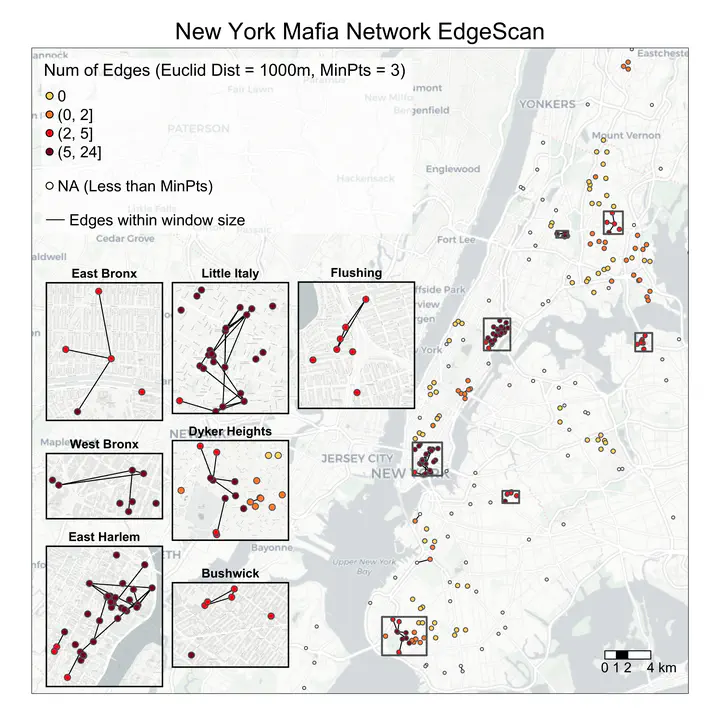Is Your Neighbor Your Friend? Scan Methods for Spatial Social Network (SSN) Hotspot Detection
 The result of EdgeScan using a 1km euclidean distance moving window
The result of EdgeScan using a 1km euclidean distance moving windowThis work is developed with Dr. Clio Andris, Joshua Baker, and Dr. Daniel Della Posta.
Abstract
In GIS, we use moving window and hot spot detection to analyze point patterns within a given area. Such methods can detect clusters of point events such as concentration of crime incidences or disease incidences. Yet, these methods do not account for the connections between individuals but instead only find clusters of points.
Here, we share two GIS methods, EdgeScan and NDScan, for capturing areas with high and low levels of local social connections. Both methods are moving window processes that count the number of edges and network density, respectively, for each node in a given focal area (window area). We implement these methods on a case study of 1960s connections between members of the Mafia in New York City with various definitions of a focal neighborhood (e.g., Euclidean, K Nearest Neighbor etc.). These methods successfully capture focal areas where Mafia members are highly connected, yet differ from traditional spatial hot spots derived through point patterns.
To make our methods publicly available, we published the EdgeScan and NDScan algorithms in the SSNtools R package and provided examples to replicate such analyses to other studies in a bookdown tutorial.